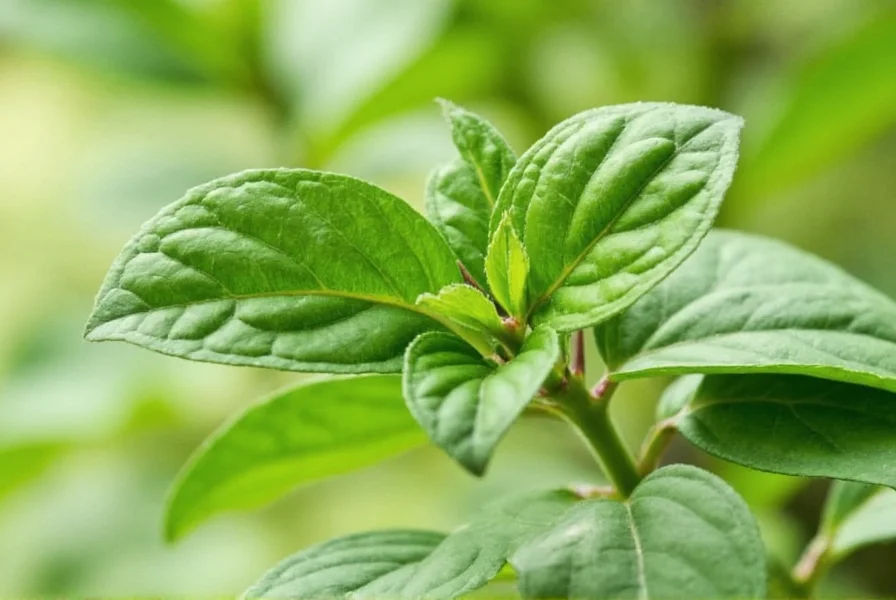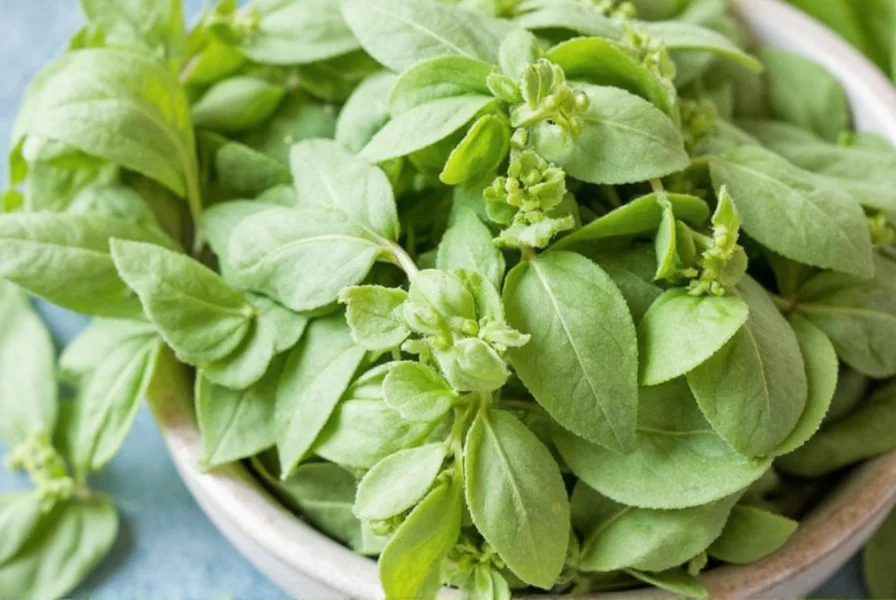Holy basil (Ocimum sanctum), often misspelled as "hulba," offers scientifically supported health benefits including stress reduction, immune support, and anti-inflammatory properties. Research indicates holy basil functions as an adaptogen, helping the body manage stress, while its antioxidant compounds support overall wellness. Traditional Ayurvedic medicine has utilized holy basil for centuries to address respiratory issues, blood sugar regulation, and digestive health, with modern studies increasingly validating these applications.
Many people searching for "hulba benefits" are actually looking for information about holy basil, known as Tulsi in Ayurvedic medicine. This common misspelling leads to confusion, but the plant referenced—Ocimum sanctum—has been studied extensively for its therapeutic properties. Let's explore the evidence-based benefits of this remarkable medicinal herb.
What Is Holy Basil (Tulsi)?
Holy basil, or Tulsi (Ocimum sanctum), is a sacred plant in Indian culture with a 3,000-year history of medicinal use. Unlike the culinary basil (Ocimum basilicum) used in Italian cooking, holy basil contains unique phytochemicals including eugenol, ursolic acid, and rosmarinic acid that contribute to its therapeutic effects. The term "hulba" appears to be a common misspelling or regional variation that searchers use when seeking information about this adaptogenic herb.

Scientifically Validated Health Benefits of Holy Basil
Modern research has begun to validate many traditional uses of holy basil. Unlike many herbal supplements with limited evidence, holy basil has substantial scientific backing for several health applications.
Adaptogenic Properties for Stress Management
Holy basil ranks among the most effective natural adaptogens. A 2014 study published in Industrial Psychiatry Journal found that holy basil supplementation significantly reduced stress levels, anxiety, and depression in participants after 60 days. The herb works by modulating cortisol levels and supporting the hypothalamic-pituitary-adrenal (HPA) axis, helping the body adapt to physical and emotional stressors. This makes holy basil benefits for stress relief particularly valuable in our high-pressure modern world.
Immune System Support
Research demonstrates holy basil's immunomodulatory effects. A comprehensive review in Phytotherapy Research highlighted holy basil's ability to enhance both cellular and humoral immunity. The herb increases antibody production, boosts T-cell activity, and enhances natural killer cell function. Regular consumption of holy basil tea or extracts may reduce the frequency and severity of common infections, making it an excellent natural immune booster during cold and flu season.
Anti-inflammatory and Antioxidant Effects
Holy basil contains potent anti-inflammatory compounds that inhibit multiple inflammatory pathways. A 2011 study in Journal of Ethnopharmacology showed holy basil extract significantly reduced markers of inflammation comparable to standard anti-inflammatory medications, but without the side effects. The herb's high concentration of flavonoids and polyphenols also provides powerful antioxidant protection against cellular damage.
| Health Benefit | Scientific Evidence Level | Recommended Form | Typical Dosage |
|---|---|---|---|
| Stress and anxiety reduction | Strong clinical evidence | Capsules, tea | 300-600mg standardized extract daily |
| Immune system support | Moderate to strong evidence | Tea, tincture | 2-3 cups tea daily or 2-3mL tincture |
| Blood sugar regulation | Promising preliminary evidence | Capsules, fresh leaves | 2.5g dried leaf powder daily |
| Respiratory health | Traditional use with emerging evidence | Steam inhalation, tea | As needed for symptoms |
Traditional Uses Supported by Modern Research
Ayurvedic medicine has utilized holy basil for millennia to address various health concerns. Modern science is increasingly confirming these traditional applications:
Blood Sugar Regulation
Multiple studies indicate holy basil may help regulate blood glucose levels. Research published in Journal of Ethnopharmacology demonstrated that holy basil leaf extract significantly reduced fasting blood sugar and HbA1c levels in type 2 diabetes patients. The mechanism appears to involve enhanced insulin secretion and improved insulin sensitivity—making holy basil benefits for diabetes management particularly promising.
Respiratory Health Support
Holy basil has been traditionally used for respiratory conditions including asthma, bronchitis, and common colds. Scientific analysis confirms its expectorant, anti-tussive, and anti-asthmatic properties. The herb helps clear mucus from airways while reducing inflammation in the respiratory tract. For those searching "hulba benefits for cough," holy basil tea with honey remains a time-tested remedy.

Safety Profile and Potential Side Effects
Holy basil is generally recognized as safe when consumed in food amounts or typical therapeutic doses. However, certain precautions apply:
- Pregnant women should avoid medicinal doses as holy basil may stimulate uterine contractions
- Those taking blood thinners should consult a healthcare provider due to potential interactions
- Holy basil may lower blood sugar, so diabetics on medication should monitor levels closely
- Surgical patients should discontinue use at least two weeks before procedures due to potential blood sugar effects
The most common side effects are mild gastrointestinal discomfort when taken on an empty stomach. As with any herbal supplement, starting with a low dose to assess tolerance is recommended when exploring holy basil health benefits.
How to Incorporate Holy Basil Into Your Wellness Routine
Several practical methods exist for experiencing holy basil benefits:
Holy Basil Tea
Fresh or dried holy basil leaves make a soothing tea. Steep 1-2 teaspoons of dried leaves or 8-10 fresh leaves in hot water for 5-10 minutes. Adding lemon and honey enhances both flavor and benefits. This simple preparation delivers holy basil benefits for immune support and stress relief.
Standardized Extracts
For consistent dosing of active compounds, standardized extracts provide reliable holy basil benefits. Look for products standardized to ursolic acid content (typically 2-5%). These concentrated forms deliver maximum therapeutic effects for stress management and inflammation reduction.
Fresh Leaf Consumption
In traditional Ayurvedic practice, chewing 4-5 fresh holy basil leaves daily provides comprehensive health benefits. This method delivers the full spectrum of phytochemicals without processing losses. Many people searching "hulba benefits" find this simple approach most effective for daily wellness.
Conclusion: Evidence-Based Perspective on Holy Basil Benefits
While the term "hulba" represents a common misspelling, the plant in question—holy basil or Tulsi—offers substantial, research-backed health benefits. From stress adaptation to immune support and blood sugar regulation, this remarkable herb bridges traditional wisdom and modern science. When exploring holy basil benefits for specific health concerns, look for products with verified authenticity and consult healthcare providers when combining with medications. The growing body of research confirms what Ayurvedic practitioners have known for centuries: holy basil represents a valuable addition to a holistic wellness approach.










 浙公网安备
33010002000092号
浙公网安备
33010002000092号 浙B2-20120091-4
浙B2-20120091-4